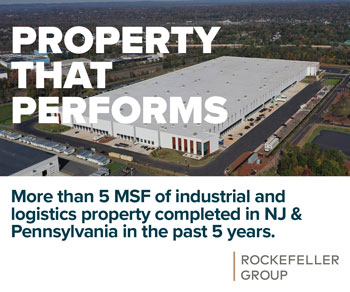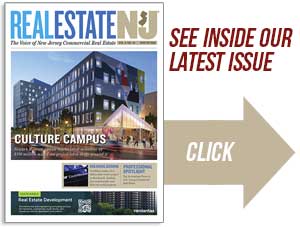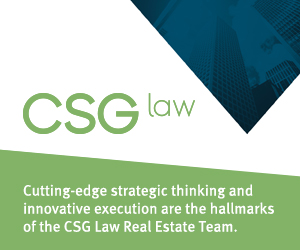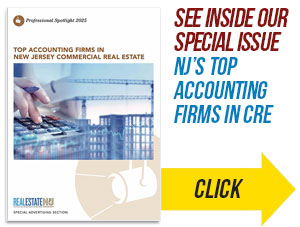We assembled a panel of industry experts to tackle this month’s question.
Here’s what they had to say:
 Lance Bergstein, CEO, Lincoln Equities Group (East Rutherford)
Lance Bergstein, CEO, Lincoln Equities Group (East Rutherford)
There are several trends impacting industrial real estate and development including rising costs, limited land availability and a flight to quality. Developers are becoming much more strategic and efficient in their design processes, focusing on rightsizing and delivering well-configured spaces tailored to core market needs, such as optimized loading docks, clear heights and circulation. While there hasn’t been a significant shift in the type of product being delivered, the sector is in a holding pattern, awaiting a broader demand resurgence. Despite the hype, artificial intelligence has yet to make a measurable impact on industrial operations or design.
 Jason Hart, executive vice president, Premier Design + Build Group (Woodbridge)
Jason Hart, executive vice president, Premier Design + Build Group (Woodbridge)
Despite elevated vacancy rates and pockets of economic uncertainty, our outlook for the industrial sector remains strong and bullish. Demand continues to grow for facilities that are designed to be flexible and future-ready buildings that can adapt to evolving tenant needs and technological shifts.
A key trend we are seeing is futureproofing through infrastructure and design adaptability. Tenants are increasingly seeking buildings with enhanced electrical capacity through microgrids, larger switchgear, integrated solar arrays and/or battery storage. Features like preinstalled conduit paths, increased floor load capacities and greater clear heights are becoming standard in the industrial sector. These upgrades not only broaden a building’s appeal to a wider tenant base but also support long-term asset resilience.
On the construction side, trade partner availability remains healthy, allowing us to maintain schedule and budget certainty and negotiate better value. In many markets, though land costs remain high, industrial construction costs are holding steady or even trending downward, creating favorable conditions for development.
We are seeing a notable shift in capital interest toward emerging industrial submarkets outside of traditional urban hubs. In the greater New York region, for instance, developers and tenants are eyeing areas such as the Hudson Valley and Northern Pennsylvania, where land is more accessible and cost-effective.
 Gregory Hewitt, senior project manager, March Associates Construction (Wayne)
Gregory Hewitt, senior project manager, March Associates Construction (Wayne)
As construction schedules tighten along with project budgets and controls, industrial warehouse construction is seeing a greater use of 3D modeling than ever before. Although this technology has been around for some time, large-scale warehouses with clear height requirements for leasing often conflict with MEP systems due to the long runs required throughout the space.
Getting storm piping, electrical conduits and ductwork across vast warehouse floors while maintaining proper pitch and staying above the owner’s leasing requirements has become more and more challenging. The use of BIM (Building Information Modeling) allows the contractor to coordinate all the elements, including lighting, steel, partitions and MEP systems, to avoid costly beam penetrations. It also helps coordinate timing and identify potential conflicts across all disciplines.
More and more general contractors and subcontractors are now employing full-time BIM coordinators on staff as an added benefit to the client, which ultimately decreases change orders due to lack of coordination and improves both schedule and profitability for all stakeholders.
 Michael Leondi, vice president, design & construction, north central development, Rockefeller Group (Morristown)
Michael Leondi, vice president, design & construction, north central development, Rockefeller Group (Morristown)
As more prospective tenants re-enter the market in late 2025 and into 2026, expect to see increasingly sophisticated and demanding requirements across several core areas: EV readiness, speed bay and truck court depth, slab loading and floor flatness for automation, clear height and trailer parking ratios. Tenant expectations are evolving, and new leases will reflect these priorities more explicitly.
Labor-friendly wellness features also remain front and center, as users look for ways to attract and retain warehouse talent in a competitive labor market. This includes natural light, upgraded break areas, transit accessibility and even on-site fitness amenities.
Another critical consideration gaining momentum is curb appeal and community integration. In some jurisdictions, perception matters more than ever, as municipalities scrutinize industrial development through the lens of economic contribution and quality-of-life impact. Buildings that demonstrate operational excellence, thoughtful design and public value will gain a regulatory and political edge.
But the most transformative shift underway is the explosive increase in electrical demand — not just from cold storage or data center users, but across traditional warehousing, logistics and manufacturing tenants. Power capacity has emerged as a defining constraint — and opportunity — for developers.
Savvy owners and operators are now future-proofing their projects by acquiring land based not only on location, but also on existing or upgradeable utility infrastructure. Being able to clearly articulate a path to achieving high-capacity power — along with reliable timelines — has become a key differentiator. In some markets, speed to utility capacity is as valuable as the ZIP code.
Forward-thinking teams are also exploring alternative energy solutions to unlock difficult sites or reduce long-term operating costs. This includes:
- On-site solar + battery storage
- Cogeneration (CHP) systems
- Fuel cells
- Emerging modular nuclear solutions (such as SMRs) for power-intensive uses
The ability to deliver outsized utility capacity faster than your competition will increasingly define who wins the tenant — and who doesn’t.









